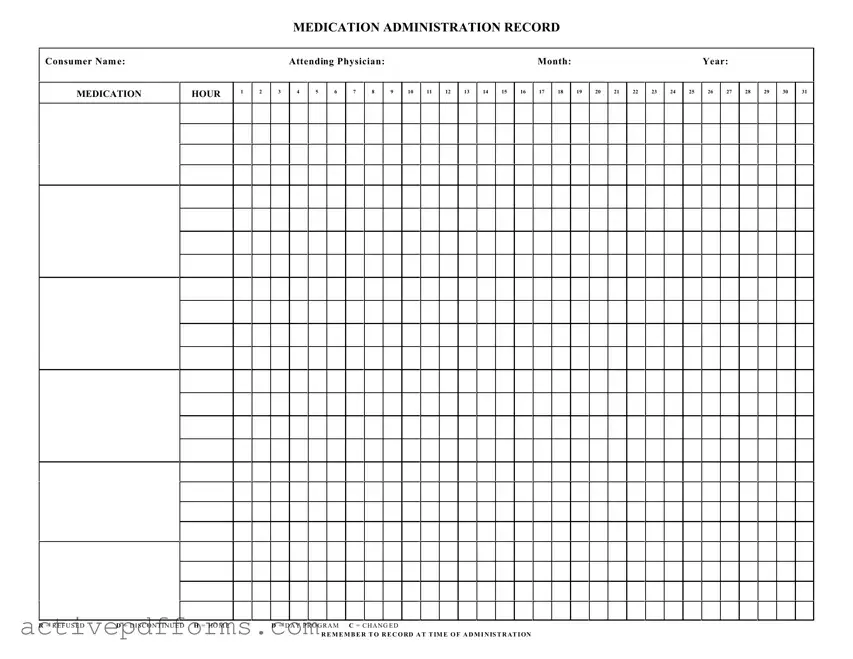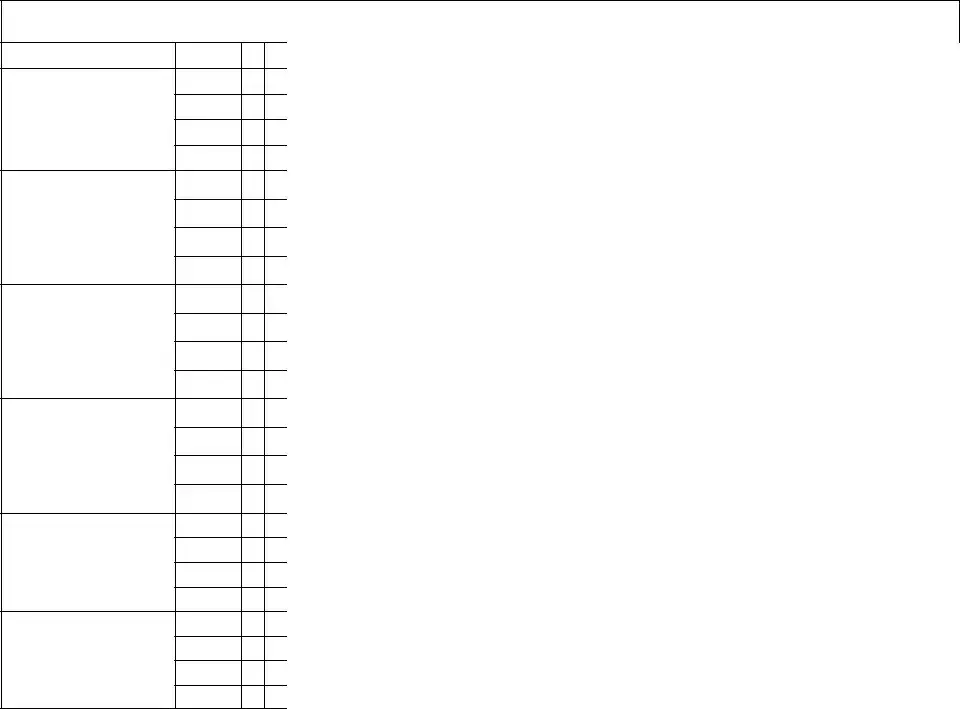What is a Medication Administration Record Sheet?
A Medication Administration Record Sheet, often abbreviated as MAR, is a document that tracks all the medications prescribed and administered to a consumer within a healthcare setting or under the care of a healthcare provider. The form typically includes the consumer's name, the medication name, dosage, frequency, and the specific times at which the medications should be administered. It also contains space to record the actual administration of each dose, including any missed doses or deviations from the prescribed regimen, with specific codes such as "R" for refused, "D" for discontinued, "H" for home, "D" for day program, and "C" for changed.
Why is maintaining an accurate Medication Administration Record Sheet important?
Maintaining an accurate Medication Administration Record Sheet is crucial for several reasons, including ensuring the safety and well-being of the consumer by preventing medication errors, ensuring the correct dosage and timing of medications, and providing a clear record for healthcare providers to review. It also supports legal compliance by documenting that the care provided meets the regulatory standards.
How is a Medication Administration Record Sheet used in a healthcare setting?
In a healthcare setting, the Medication Administration Record Sheet is used by healthcare providers to document each administration of medication to a consumer. The healthcare provider checks the MAR before administering a medication to confirm the correct medication, dose, route, and time. After administration, the healthcare provider records the outcome using the designated codes and notes any relevant observations or side effects. This document serves as a communication tool between multiple caregivers to ensure continuity and consistency in medication administration.
What do the codes on the Medication Administration Record Sheet mean?
The codes on the Medication Administration Record Sheet represent different statuses for medication administration:
- R stands for Refused: This indicates that the consumer refused to take the medication.
- D stands for Discontinued: This indicates that the medication has been stopped by the attending physician.
- H stands for Home: This indicates that the consumer took the medication at home.
- D in this context, repeated for clarity, can also stand for Day Program: This indicates that the medication was taken while the consumer was in a day program outside the primary care setting.
- C stands for Changed: This indicates that there has been a change in the medication order by the attending physician.
It is imperative to understand and use these codes correctly to maintain an accurate record of medication administration.
How often should the Medication Administration Record Sheet be updated?
The Medication Administration Record Sheet should be updated at the time of each medication administration. This real-time logging ensures the most accurate representation of the consumer's medication regimen and adherence. Any changes in medication, whether a new prescription, a discontinuation, or a change in dosage, should be promptly recorded to keep the MAR current.
What should healthcare providers do if a medication is refused or missed?
If a medication is refused by the consumer or missed for any reason, healthcare providers should record this event on the Medication Administration Record Sheet using the appropriate code (in this case, "R" for refused). They should also note the reason for the refusal or missed dose, if known, and report the incident to the supervising nurse or physician. Based on the situation, additional follow-up or intervention may be necessary to ensure the consumer's health and safety.
Can the Medication Administration Record Sheet be maintained electronically?
Yes, the Medication Administration Record Sheet can be maintained electronically. Many healthcare settings have adopted electronic health records (EHRs) that include digital versions of MARs. These systems can enhance the accuracy and efficiency of medication administration records, reduce errors associated with manual documentation, and improve communication among healthcare providers. However, it is important that digital records are kept secure and compliant with healthcare privacy laws.
What should be done when a medication is discontinued?
When a medication is discontinued, the healthcare provider should clearly mark this on the Medication Administration Record Sheet using the designated code "D" for discontinued. The date the medication was stopped should also be recorded, along with the name of the physician who made the decision. This ensures the MAR accurately reflects the consumer's current medication regimen and prevents unintentional administration of discontinued medications.
What is the role of the attending physician in regards to the Medication Administration Record Sheet?
The attending physician plays a crucial role in regards to the Medication Administration Record Sheet. They are responsible for prescribing all medications and any changes to the consumer's medication regimen, including starts, changes, and discontinuations. The physician's orders are recorded on the MAR by healthcare providers to guide the safe and accurate administration of medications. Additionally, the physician must review the MAR as part of ongoing patient care, ensuring that medication management is appropriate and responding to any issues flagged through the MAR.
How can mistakes on the Medication Administration Record Sheet be corrected?
Mistakes on the Medication Administration Record Sheet should be corrected according to the healthcare facility's policy, which often includes striking through the error with a single line, recording the correct information nearby, and initialing and dating the correction. It's important not to obliterate the original entry, as the correction process itself provides a transparent history of actions taken. All corrections should be made as soon as the mistake is noticed to ensure the record accurately reflects the medication administration activities.

